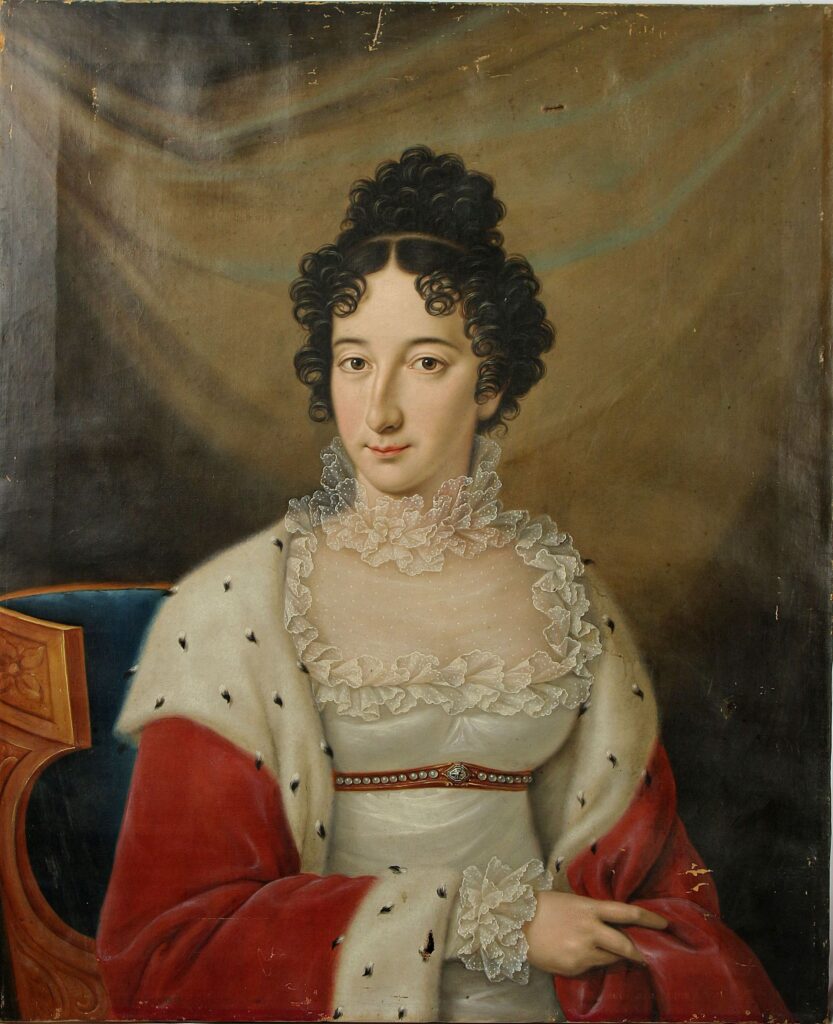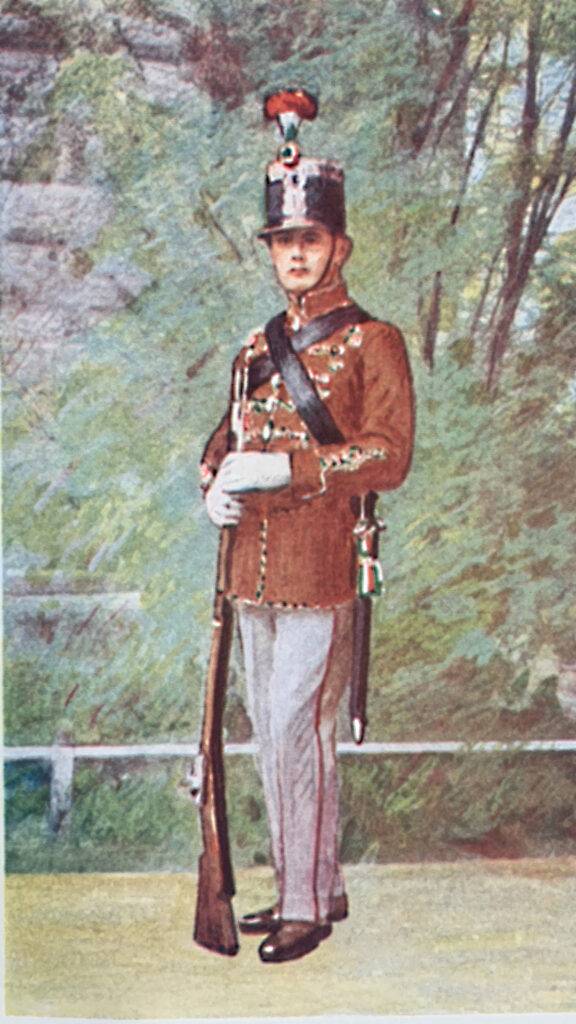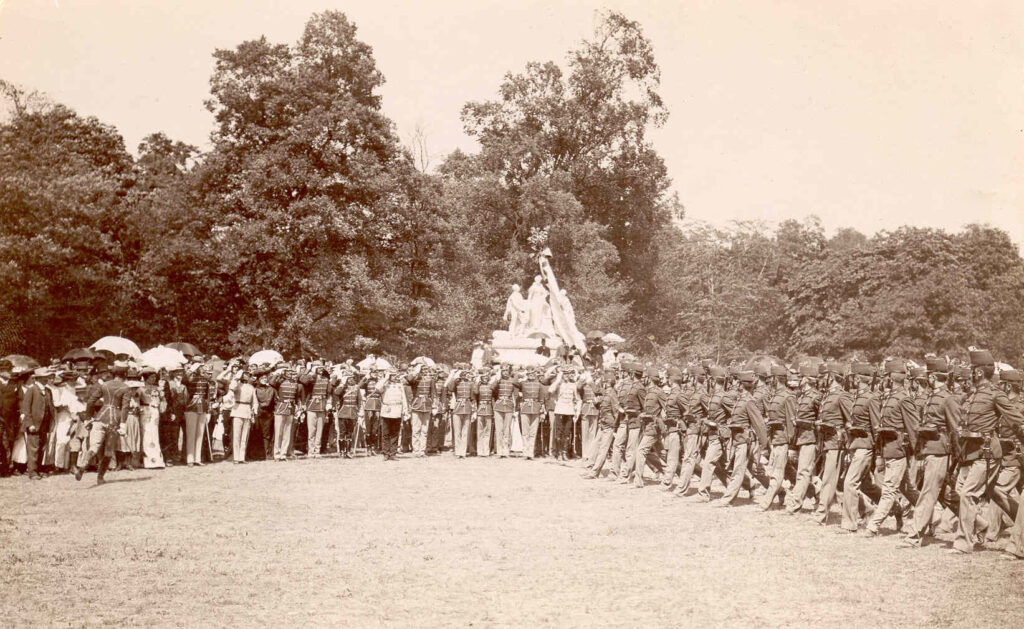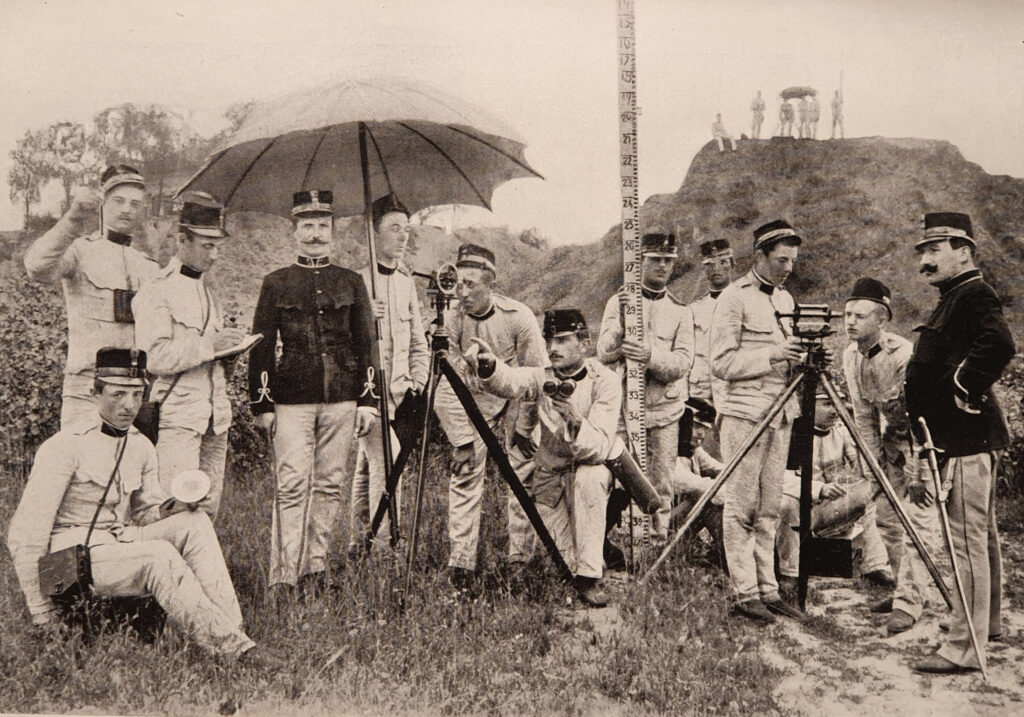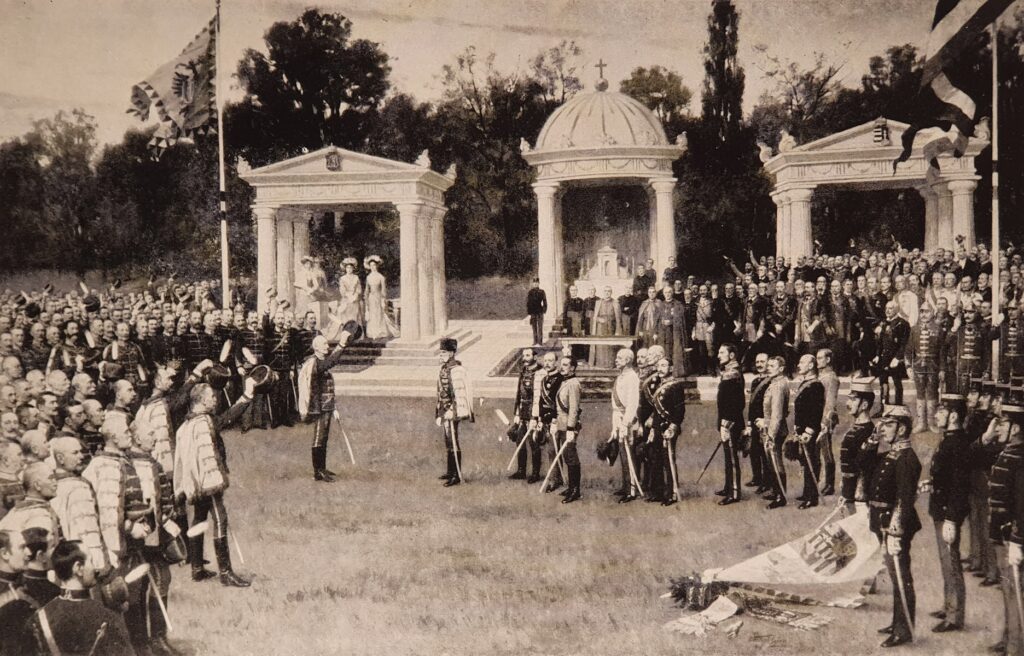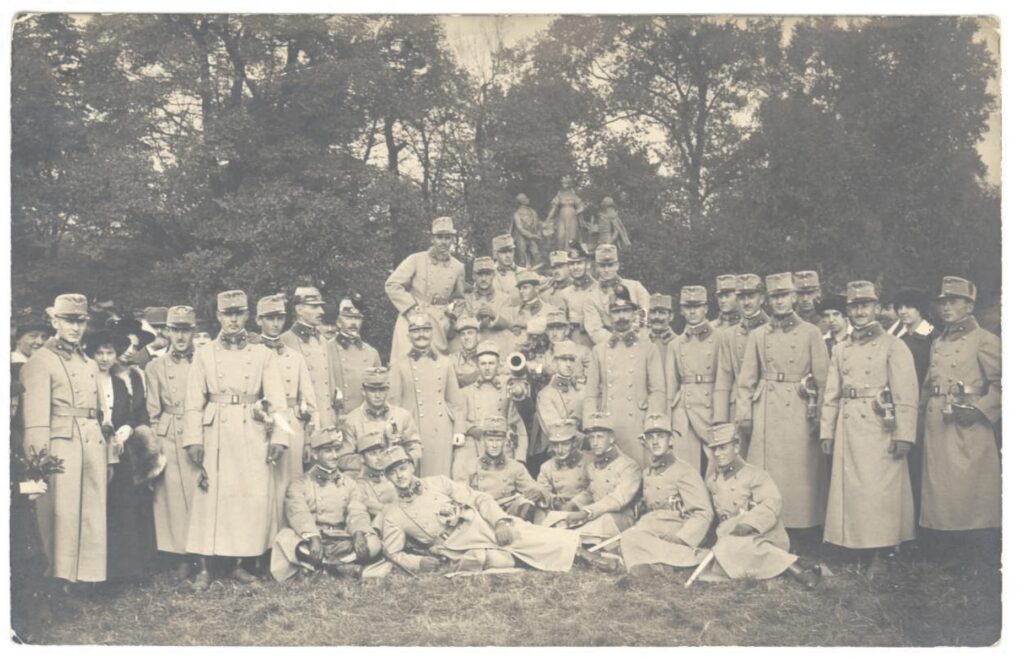HISTORY OF LUDOVIKA
first appeared after the death of Holy Roman Emperor and King of Hungary Joseph II (1780-1790). As part of the Habsburg Empire, the Kingdom of Hungary did not have an independent army, although the Imperial Army had regiments with Hungarian personnel. The training and preparation of the officers took place either in the regiments or at the academies in Vienna and Wiener Neustadt, in German language. One of the important stages in the growth of Hungarian national self-awareness is the resolution passed by the National Assembly in 1790 – 91 on the need to establish a “national military school”. The initial resistance of the Imperial Court was so weakened by the war period beginning in 1792 that Emperor Francis I eventually approved Act VII of 1808 thus accepting the “establishment of a national military academy and the development of military sciences in the country.” Maria Ludovika of Austria-Este, the spouse of the ruler, also contributed to the donation funds, thanks to which the academy planned for Vác was renamed Ludovika. “The objective of the training is to make young people “fit and able to serve the country usefully”.
Post-war inflation eroded the foundation’s resources, and the ruler even halted construction work that had already begun. However, the Hungarian Reformer opposition kept the case of Ludovika on the agenda, and the idea of creating a force for a modern bourgeois nation evolved. In 1829, the Ludovika Foundation, which was growing thanks to donations, purchased the Orczy Garden, where and on the adjacent plot provided free of charge by the City Council of Pest, a beautiful and prestigious classicist-style academic building was completed by 1836 in accordance with the plans of Mihály Pollack. In the same year, new Emperor Ferdinand V approved the law on the foundation of Count John Buttler.
and despite another law and several parliamentary resolutions, it was a military hospital that operated in the building for the following decades. During the War of Independence in 1848-49, the Hungarian Military High School was established on the initiative of General Lázár Mészáros, Minister of Defence, but it could only operate for a short period of time. After the War of Independence, the Ludovika building once again housed a military hospital.
established by the 1867 Great Compromise, found itself in the middle of a reorganization of power in Europe. Along with newly united Germany and Italy, the Monarchy also aimed at political and economic expansion, for which the continuous development of the armed forces was essential. The legal base of this program was created by the Defence Forces Act of 1868 and the related laws introducing general conscription and determining parts of the armed forces. This is how the Royal Hungarian Army was established alongside the Imperial and Royal Common Army.
– infantry and cavalry only since artillery was not allowed – the preparation of officers was to be provided primarily by the Ludovika Academy, which started its operation pursuant to Act XVI of 1872. As a result, military education in Hungarian as the language of tuition could begin 64 years after the Act was passed. For the time being, however, no academy-level training was conducted, as only officer and senior officer courses were launched. The first commandant of the Academy was Colonel Sándor Móricz, who had fought in the Army Corps of General Bem during the War of Independence. In the following years, the courses enlarged, the requirements increased, but the temporary goal set for the Academy remained unchanged: to provide officers for the army as fast as possible. A class with Croatian language of instruction was launched in each year, and 1877 saw even the launch of a gendarmerie class.
developed into a genuine military training establishment after the approval of Act XXXIV of 1883, integrating the Academy into the system of military schools of the Monarchy. This meant that mostly middle-class young men between 14 – 16 years of age who had chosen the career of a military officer were provided with four years of training. For its students, the Academy has provided ever-expanding opportunities not only in the field of education but also in the areas of recreation, entertainment, and culture. As the courses continued to take place here, a wing building was built.
The students studying military subjects in addition to secondary grammar school subjects, had music, dance, singing, and shorthand too among their academic subjects. Great emphasis was placed on teaching religious morality as well as acquiring the rules of social behaviour. The Ludovika Academy became one of the centres of the capital’s sports life while it also provided all the conditions for its students to become healthy and well-educated officers – role models for society.
became an educational institution of the level dreamed up by the initiators of the foundation and the legislators of 1808 pursuant to Act XXIII of 1897, approved by the Monarch. The Act required the Academy to launch real military higher education in line with the Wiener Neustadt model. Under the same Act, the operation of a military secondary school in Sopron, and military cadet schools in Pécs and Nagyvárad (Oradea) began, as institutes of military secondary education. The commandant of the Academy was appointed by the Monarch on the proposal of the Minister of Defence.
The goal was to prepare officers who could even perform staff-level service. After successfully completing their three-year-long academic studies, the graduates were promoted to lieutenant and assigned to one of the units of the Hungarian Army or the Common Army. Most of them joined the infantry of the Hungarian Army. Academy graduates wore various distinctive marks symbolising their achievements. During the training, great emphasis was also placed on making the future officers role models for society.
The flag-presentation ceremony of the Academy took place on 8th May 1901 in the presence of the king, a number of members of the Royal Court, all the generals of the Hungarian Army, and a delegation from the government and Parliament.
also brought major changes in the life of the Academy. The development of the army made it inevitable to organize the service branch of artillery, therefore the training of artillery officers began at the same time.
The mobilization, the protracted war, and the gigantic losses called for much of the teaching staff to the battlefields, where prospective officers were also very much expected. The duration of training was reduced from three to two years, which meant that fewer teachers had less time to prepare officers who would hold their ground on the battlefield well.
the People’s Commissariat for War of the Hungarian Soviet Republic abolished the Academy and ordered the establishment of a six-week-long commander training course. However, this attempt failed. On the other hand, the Ludovika students took part in the unsuccessful yet reckless uprising against the short-lived Hungarian Soviet Republic on 24th June 1919.
put officer training on a new basis, and Ludovika evolved into a four-year military college. Students had to sign up for twenty years of service. In addition to training in service branches, the training of combat engineer officers and signals officers was also launched. Within the officer training great emphasis was placed on patriotic education, the acquisition of rules of social interaction, the development of camaraderie and behaviour, and the development of the need for self-improvement.
another military academy was established in Pécs, which was called the “Public Order Academy” due to the limiting Trianon prohibitions. This institution was integrated into the Ludovika Academy in 1931. At that time, two main groups were formed, thus service-branch oriented training and technical training were separated. The names then had only concealment purposes, as the founding of main group Ludovika II actually marked the establishment of a military technical academy. Afterwards, there was no significant change in the military and academic structure in the Ludovika Academy of the Royal Hungarian Army until 1939.
1939. e issued on 22nd May 1939, the training of officers was to be conducted from academic year 1939 – 40 onwards at the following three military colleges: the Ludovika Academy for Infantry, Cavalry and Artillery; the Horthy Miklós Military Aviation Academy for the Air Force; the Bolyai János Technical Academy for technical-related weapons and military units, as well as for the gendarmerie. Thus, main group II took the name of János Bolyai, and main group I again operated under the name Ludovika Academy. In 1942, due to an increasing shortage of officers, the training period was reduced to 2 years, but it was still considered 3 years as it included a one-year service at troops. From academic year 1943 – 44 onwards, the duration and contents of training were further reduced. From the autumn of 1944, the academy students were deployed in garrisons all over the country, where they served as section or platoon commanders at fortification works. The last officer commissioning ceremony of the Ludovika Academy took place in Körmend, in the castle garden of the Batthyány Palace and in Hajmáskér on 15th November 1944. The institution then transferred to Germany and ceased to exist on 25 April 1945.

